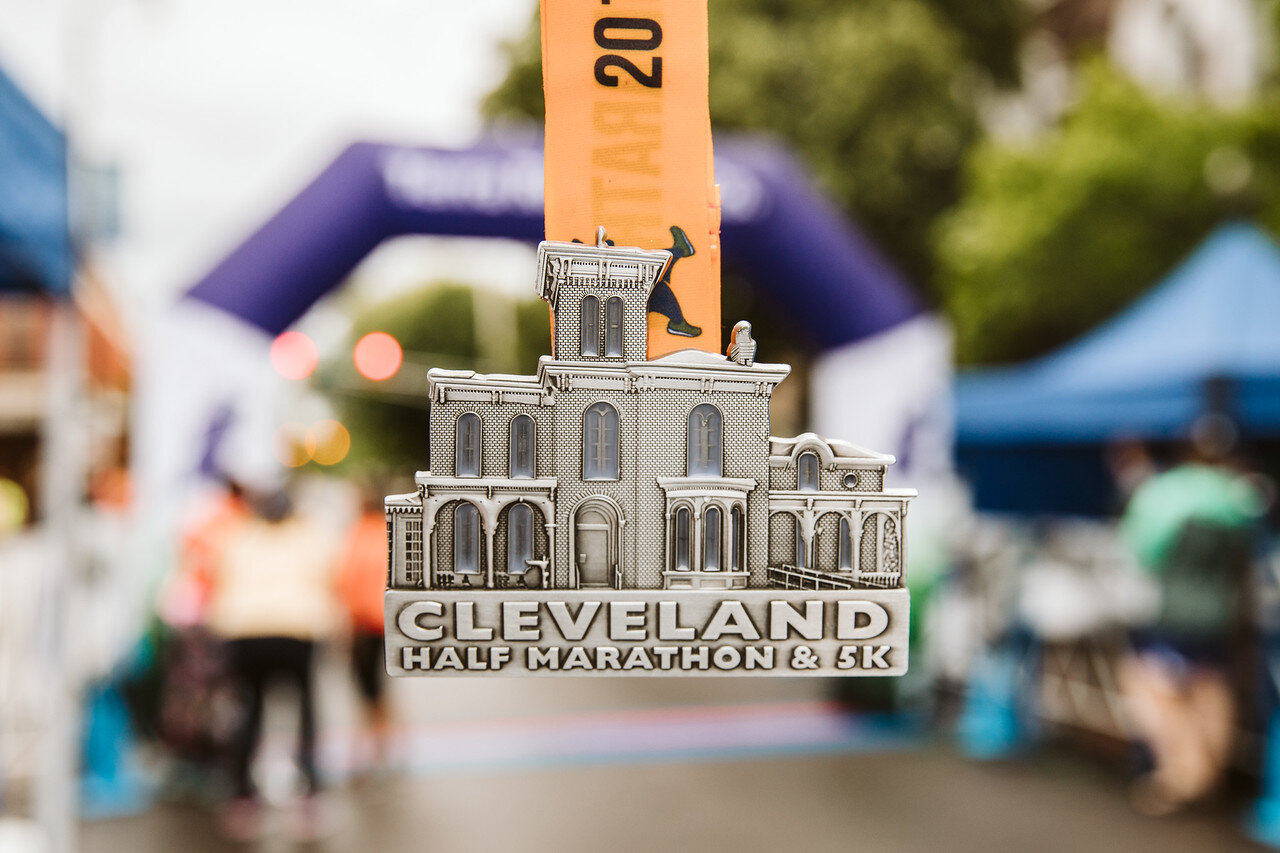
Improving Your Running Form
Although running seems natural and like something you shouldn't have to think too hard about doing, having an efficient running form can make a big difference. Whether you want to run longer or harder, being sure to not waste energy on movement unrelated to forward progress will increase efficiency and help you improve, even incrementally.
The first step to improving running form is to simply be aware of your current form. It's much easier to have good form when you are just starting a run, but the more fatigued your body gets, the harder it will be to maintain proper form and the more inefficient you can become. Before trying to change any part of your form, go for a run and simply notice where your body moves naturally. Then, choose one aspect at a time to focus on per run. According to the New Balance Good Form Running curriculum, here are four key points to work on to improve efficiency:
#1: Posture: Keep your shoulders above your hips and hips above your ankles. Relax your shoulders and bend your arms at about 90 degrees. Use small arm swings and be sure not to cross the midplane of your body with your hands.
#2: Midfoot: Try to strike with your midfoot, halfway between your arch and toes. Strike under your body, avoiding reaching too far out with your foot. Try to strike lightly, avoiding pounding.
#3: Cadence: A target cadence is about 180 beats per minute. Download a metronome app on your phone and run to the beat to stay on a certain cadance. In order to hit a higher cadence, you'll have to take shorter, quicker steps. If 180 feels too quick at first, try to increase your current cadance by 5-10 beats per minute. You can also download cadence playlists to run along to.
#4 Lean: Lean from your ankles, not your waist. Keep your body aligned (see Posture), but keep a slight lean from your ankles to encourage a forward motion.
When considering your running form, don't worry about trying to improve all of these aspects at one time. When I do running form clinics with high school and middle school teams, I tell them that trying to worry about too many of these aspects of form at the same time is like trying to pat your head and rub your stomach at the same time; it seems simple but gets confusing! As you simply notice what you are already doing and focus on one thing at a time, your form will improve with each run.
What is Heel-to-Toe Drop?
“Heel-to-toe drop” is a term that often gets thrown around when comparing running shoes. Maybe you’ve heard of this mysterious phrase or maybe you haven’t. The good news is it’s a pretty easy concept to understand; it simply means the difference in height between the heel and the forefoot of the shoe. The even better news is, if you’re a beginner runner, you probably don’t even need to worry yourself with it. Simply getting into a quality shoe will get you to where you need to be. However, if you’re getting a bit more into running, are thinking of switching up shoes, or are trying to figure out how to best address a recurring injury, heel-to-toe drop can be a interesting concept to explore.
Heel-to-Toe Drop vs. Stack Height
Brooks Ghost: 12mm drop; Hoka Bondi: 4mm drop; Altra Torin: 0mm drop
First things first, let’s cover some terms. Like we have already mentioned, heel-to-toe drop (or “drop”) is the difference between the heel and forefoot in the shoe. As an example, a high heel shoe has a very high heel-to-toe drop, whereas, if you are walking around barefoot, there is zero drop. So what then is “stack height?” Stack height is how much height is in between your foot and the ground when it is in the shoe. If you’ve ever put on a pair of Hokas and felt like you gained 3 inches, that’s because it has a very thick midsole and thus, a very high stack height. Generally, the more stack height the more cushion the shoe has (though certain materials will feel softer than others). The reason this is helpful to understand when talking about heel-toe drop is because people often get them confused. This is probably because lower or zero drop shoes are often associated with the “minimalist” running movement that was very popular about 10 years ago (think of the book Born to Run or the FiveFinger shoes). While this is somewhat true — proponents of zero drop shoes often are because they believe it is healthier and more natural for your feet— it is not completely true because you can get low or zero drop shoes that have tons of cushion (very unlike those Five Finger shoes). As an example, most Hokas would fall in the low drop category. In fact the Hoka Bondi, our most cushioned shoe in stock, only has a drop of 4mm. Contrast that with the Brooks Ghost which has a drop 3x that at12mm.
Why does this matter?
Courtesy of RunRepeat
It is important to restate that most people don’t need to concern themselves too much with heel-toe drop. That is what we are here for! Come into Terra and we will talk to you about your needs, any injuries you have or have had, what shoes have felt good in the past, etc. But for those who are interested in learning more about running or are wanting to explore how different shoes effect their body and gait it is helpful to consider. This is because research does shoe that lower drop shoes put more load on your feet, ankles and Achilles, whereas higher drop shoes put more load on your hips and knees. This can be good to know if you had or have an injury. Lower drop shoes also have been shown to improve runner’s cadence (the amount of time it takes for you to toe off), while higher drop shoes increase the amount of foot switch time between strides. Studies have also shown that runners were 9.2x more likely to run with a forefoot strike in minimalists compared to regular running shoes, so if you are trying to work on landing more on your forefoot it could be a good idea to test out a lower drop shoe. This being said, that same study showed that, even though runners were almost 10x more likely to run with a forefoot strike in a more minimalist shoe, 70% of runners in minimalists continued to rearfoot strike (Cheung et al. 2016). This matters because a lot of more “minimalist shoes” don’t have the necessary cushion to protect heel-strikers which could potentially put someone at more risk for injury. Because low or zero drop shoes also put more load on the feet, ankles and Achilles, if you are switching from a much higher drop shoe, there is more risk of incurring an injury if someone does not adequately ease into the shoe.
So which is best?
There is not necessarily a “best” drop since it all depends on the runner and what their needs are. Me personally? I like lower drop shoes. I feel the effect it has on my cadence and running form. But I frequently have customers who come in and specifically request higher drop shoes because they like how it feels for them. If you’re not sure what you like, try to think of shoes that you have loved in the past and find out what the drop was. If you have a few different shoes to pull from you might see a pattern… but then again, maybe you won’t! Remember, it is healthy to mix up shoes to help prevent injury. This is because it spreads out that load across different parts of your body. At the end of the day, having a fresh pair of shoes will help keep you injury free regardless of their drop.



